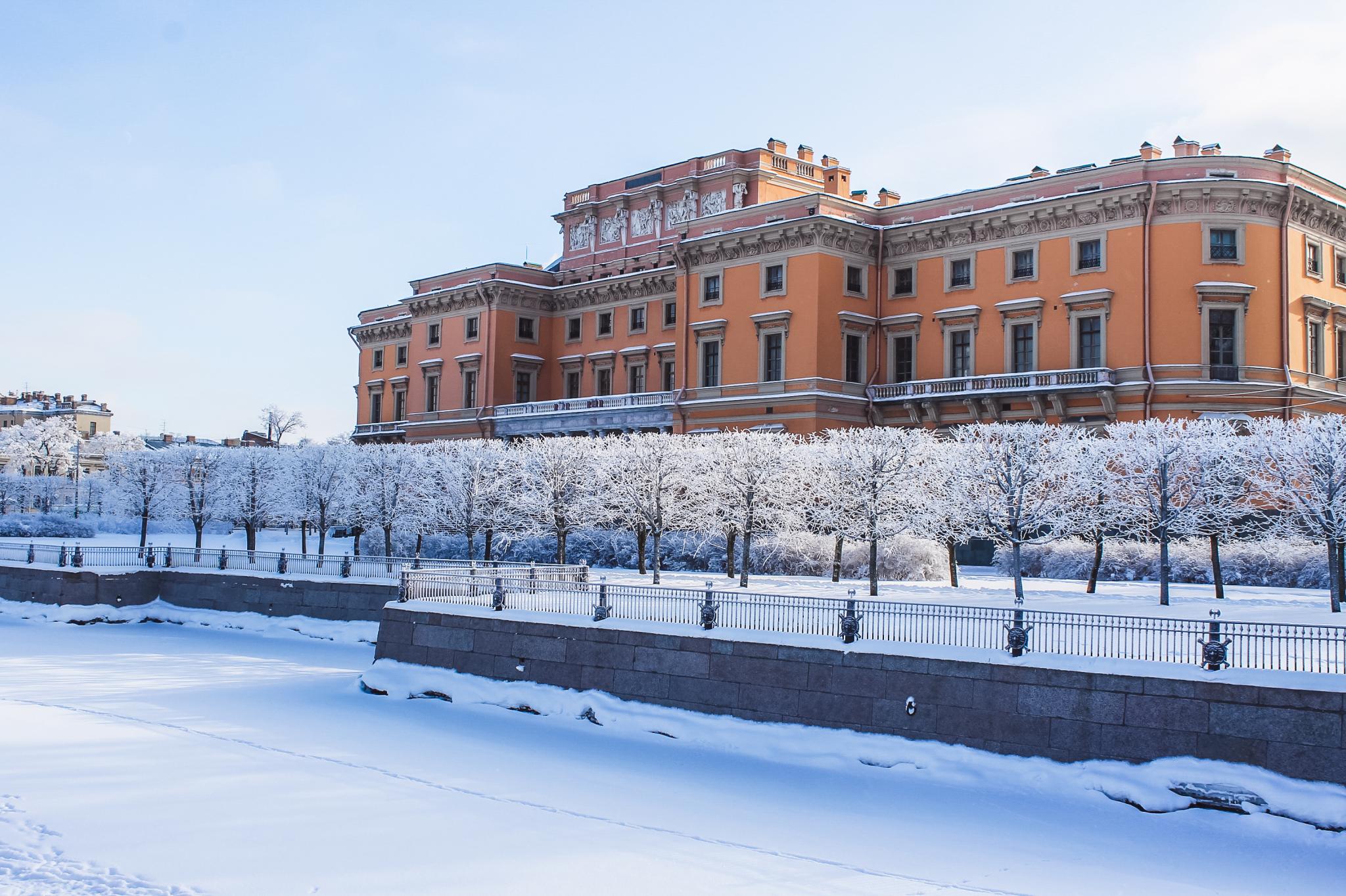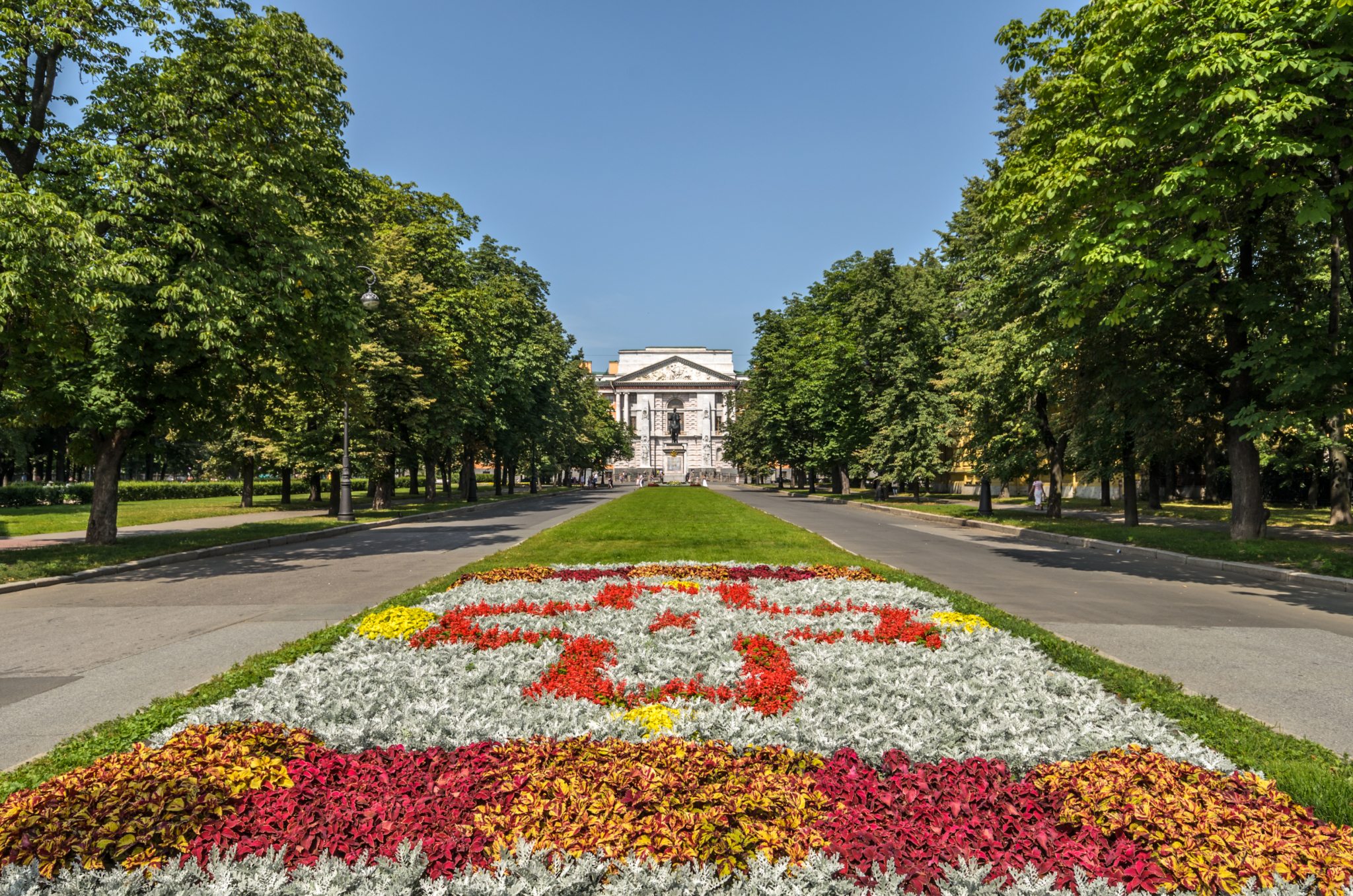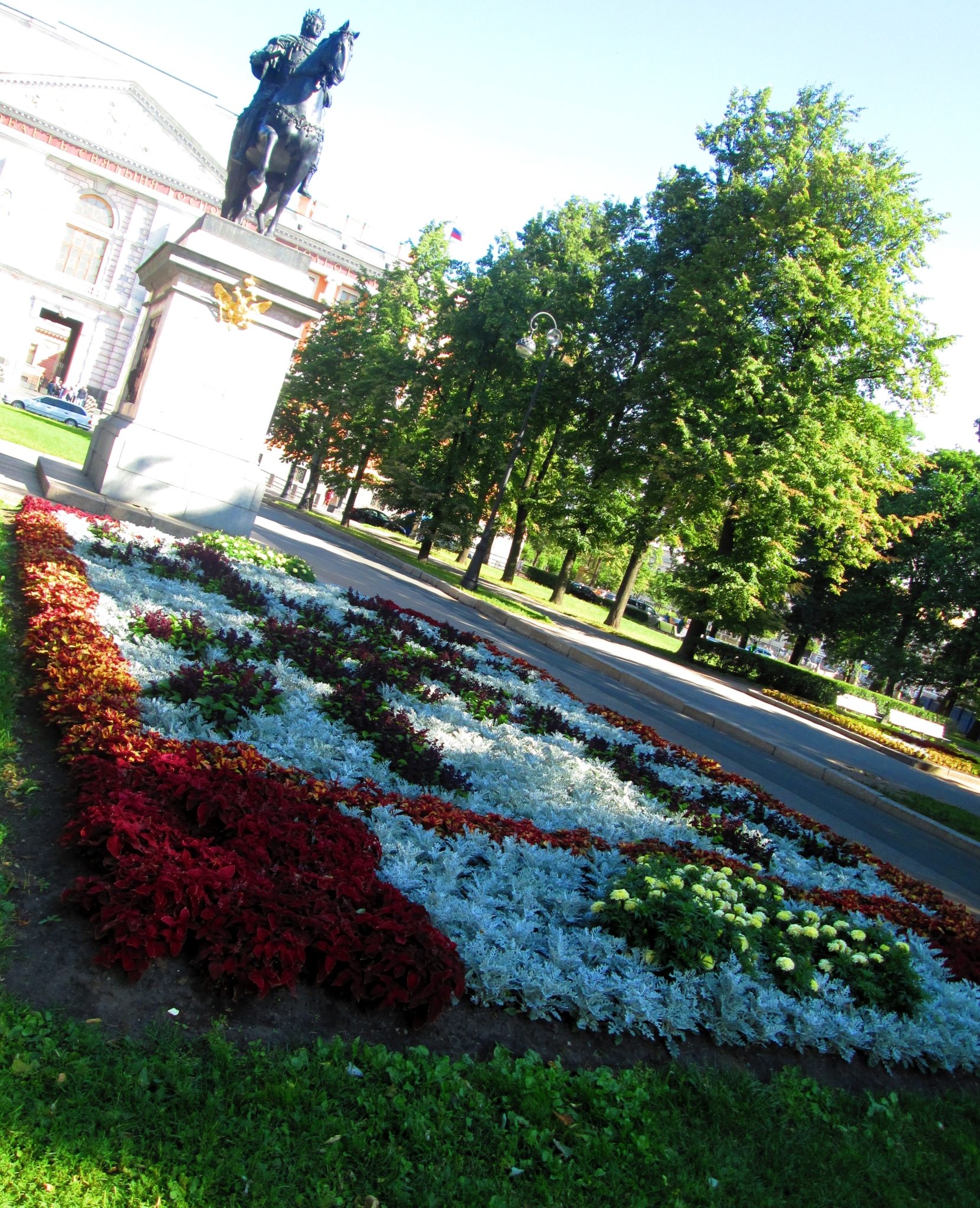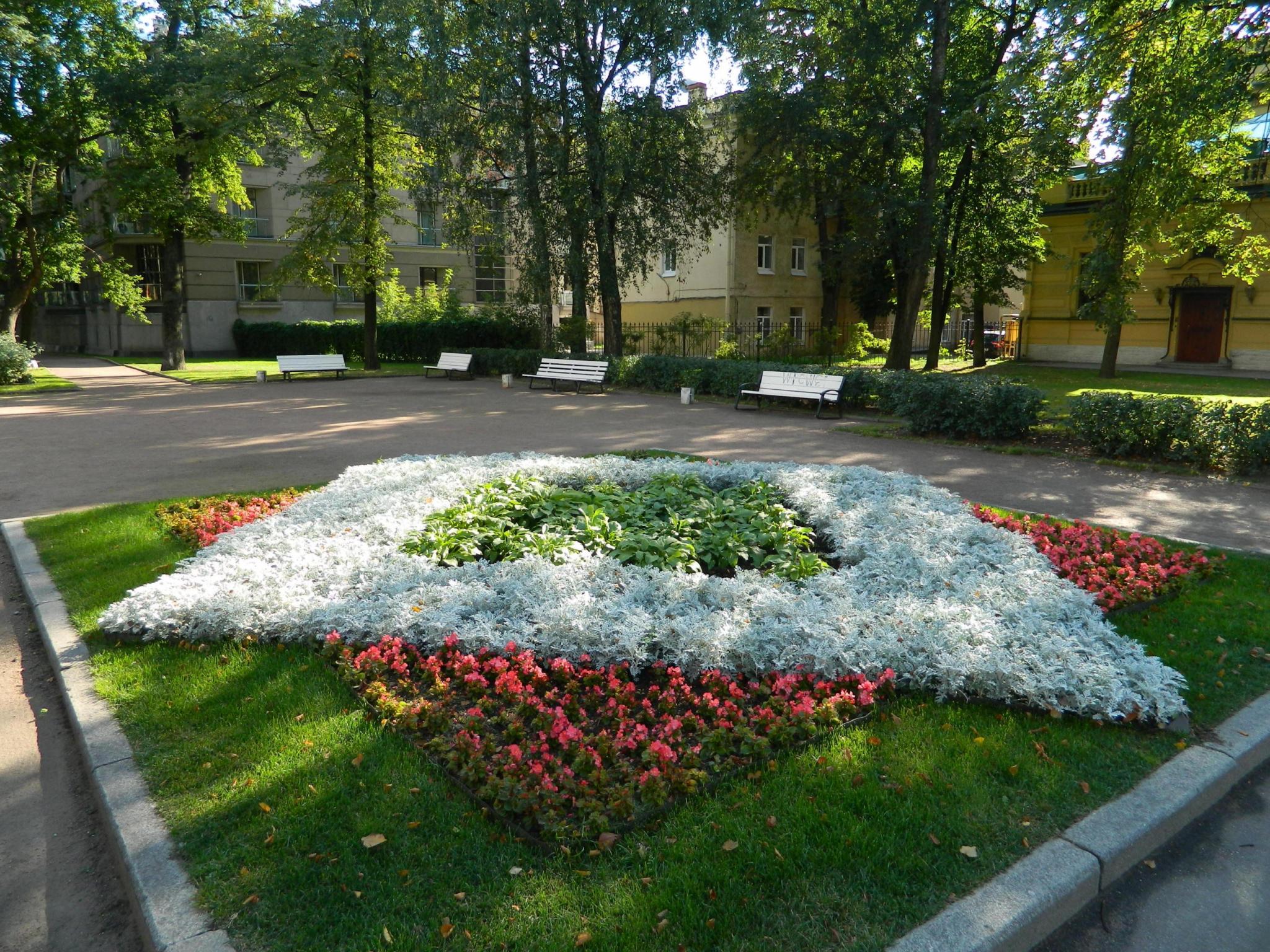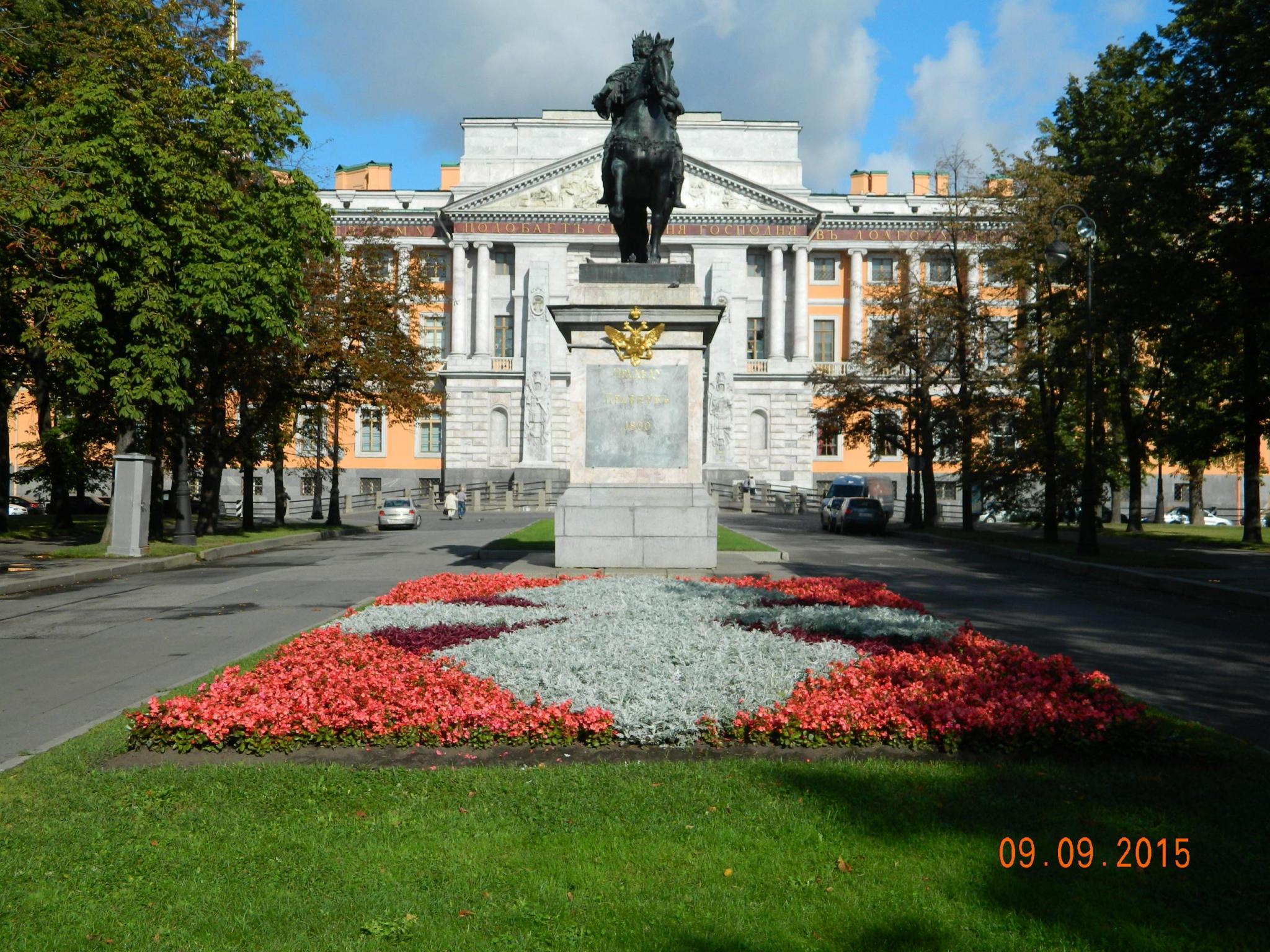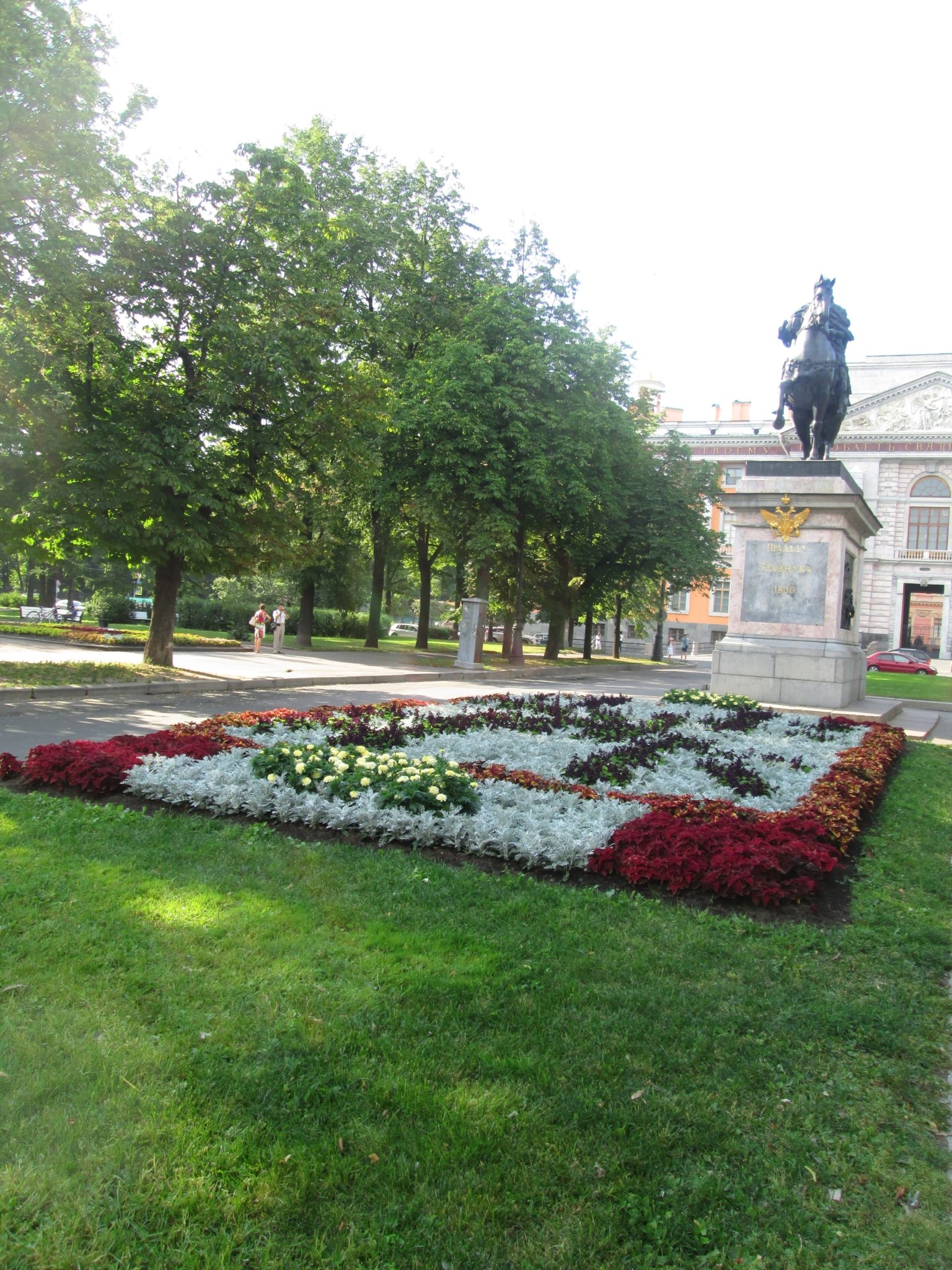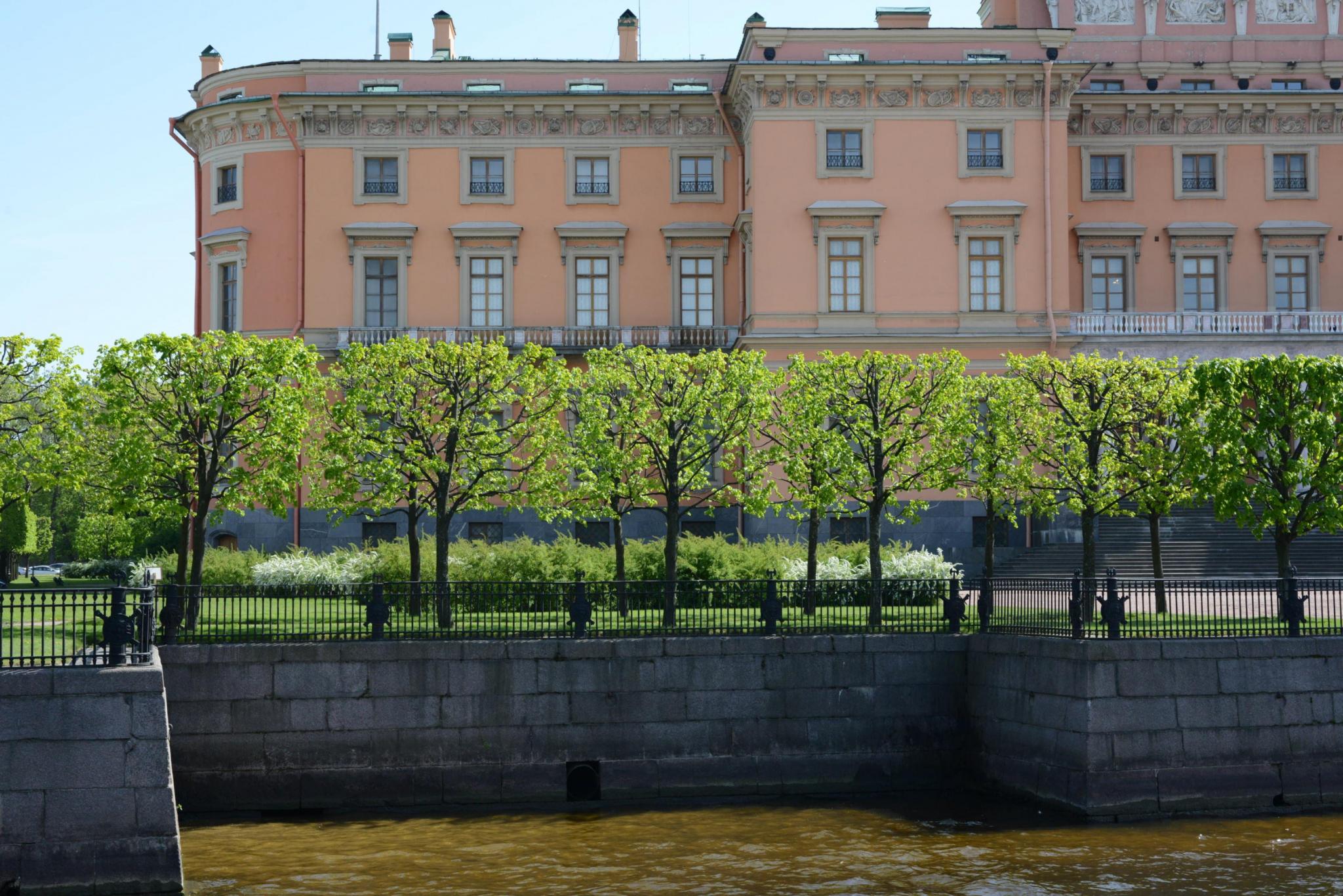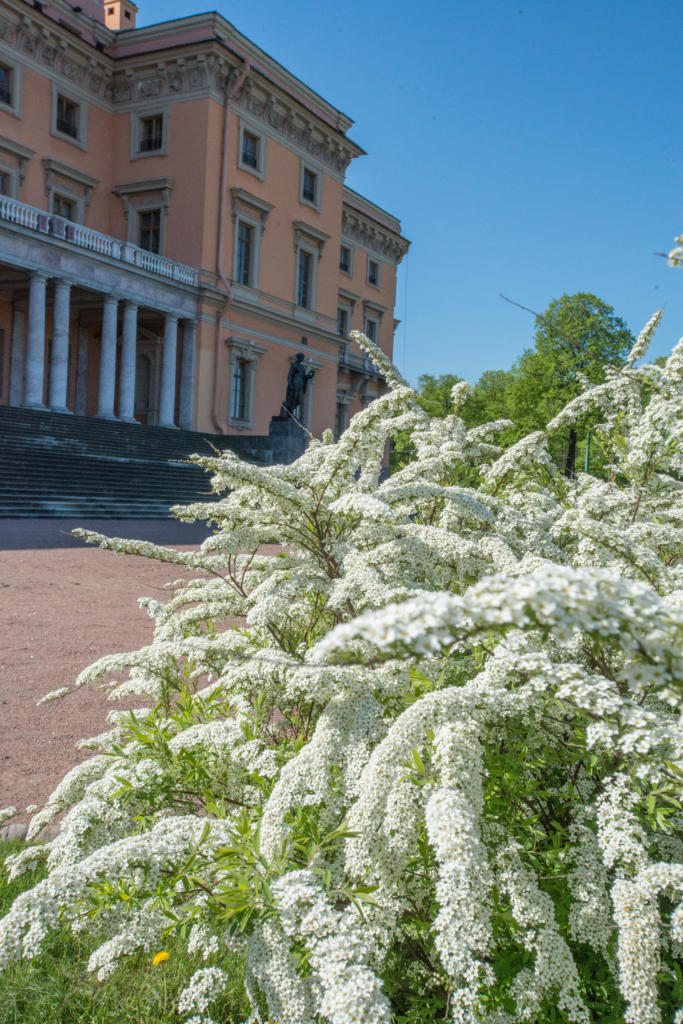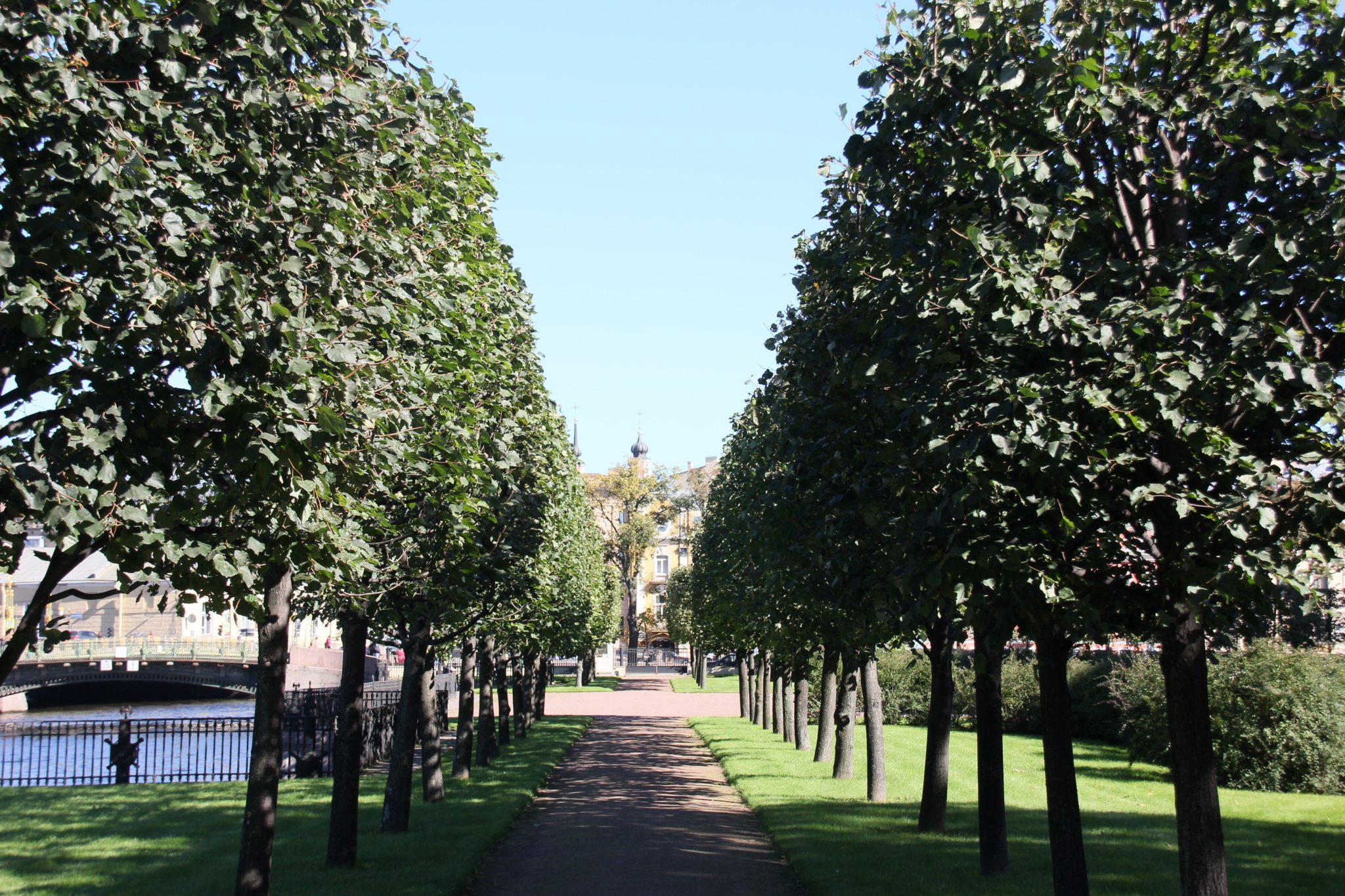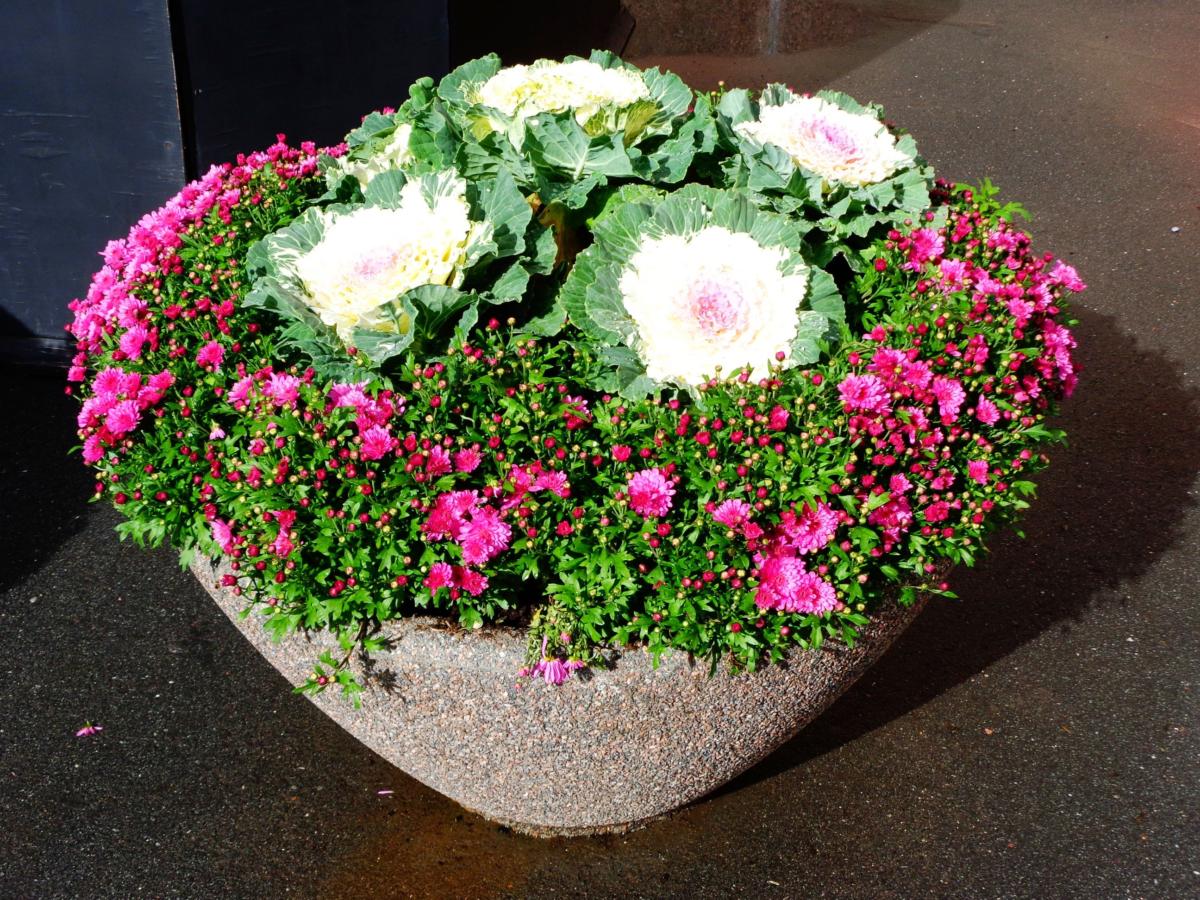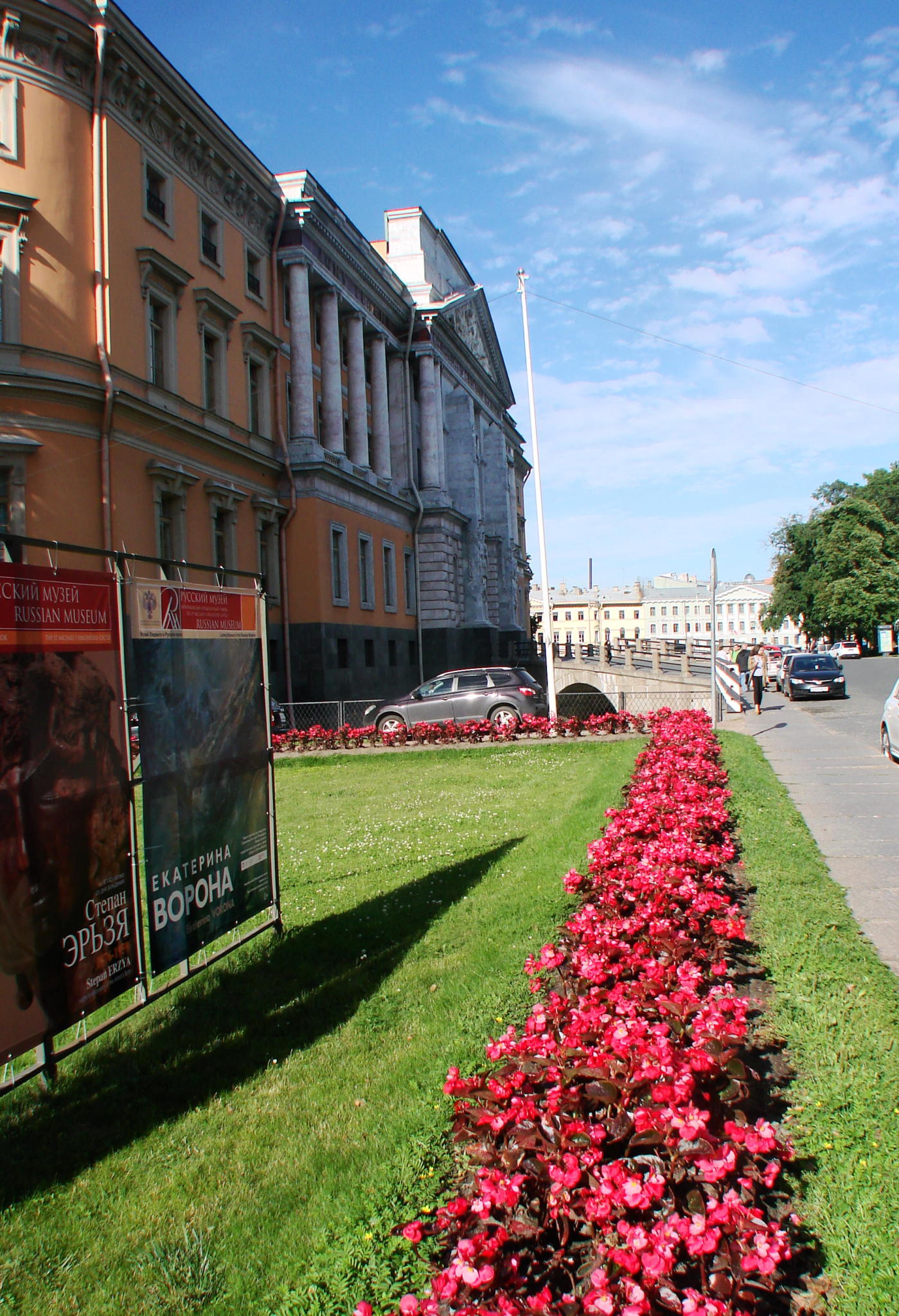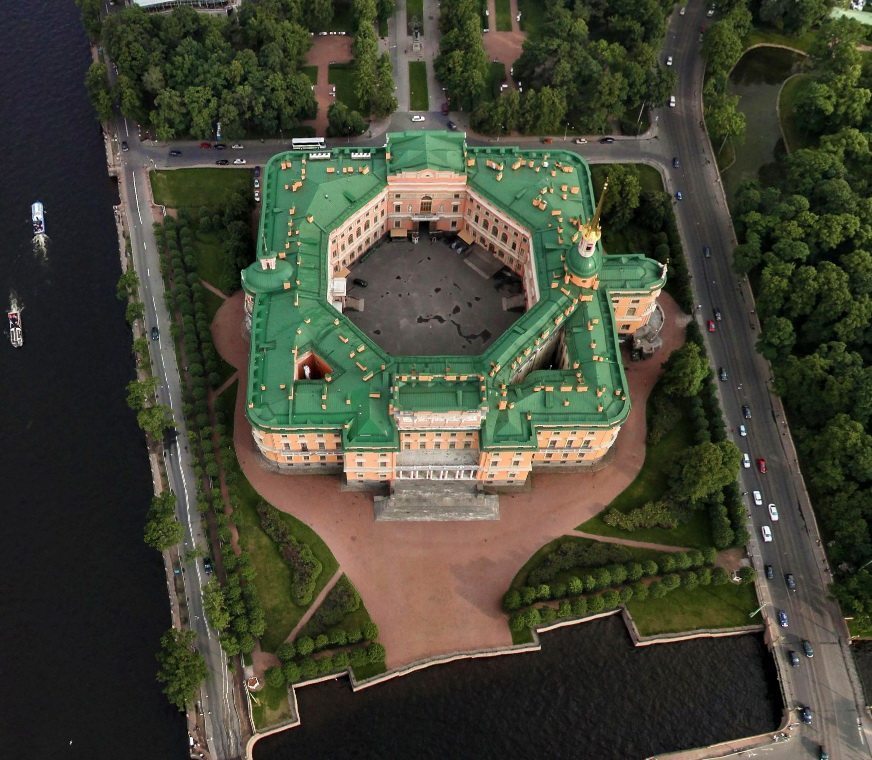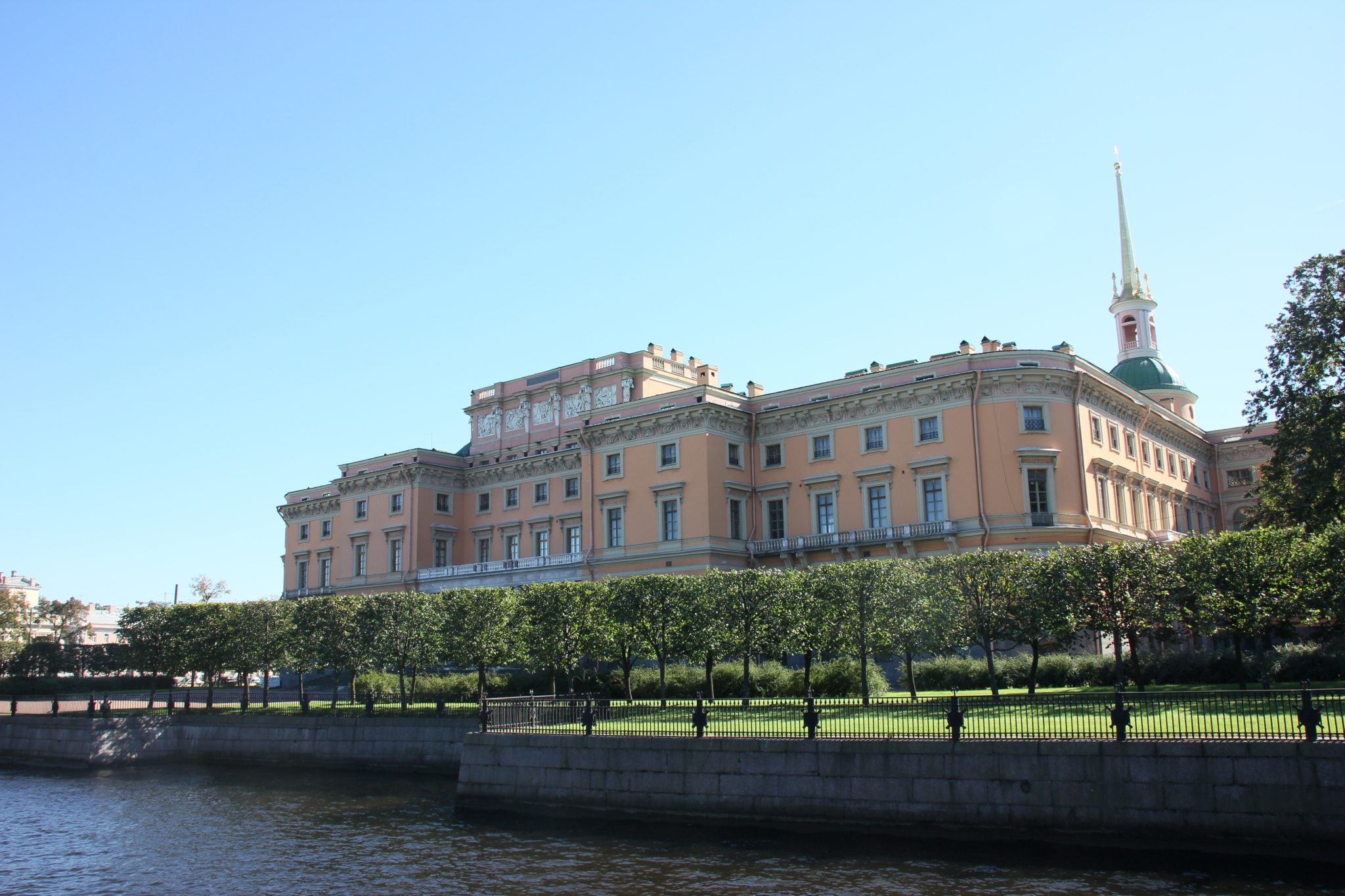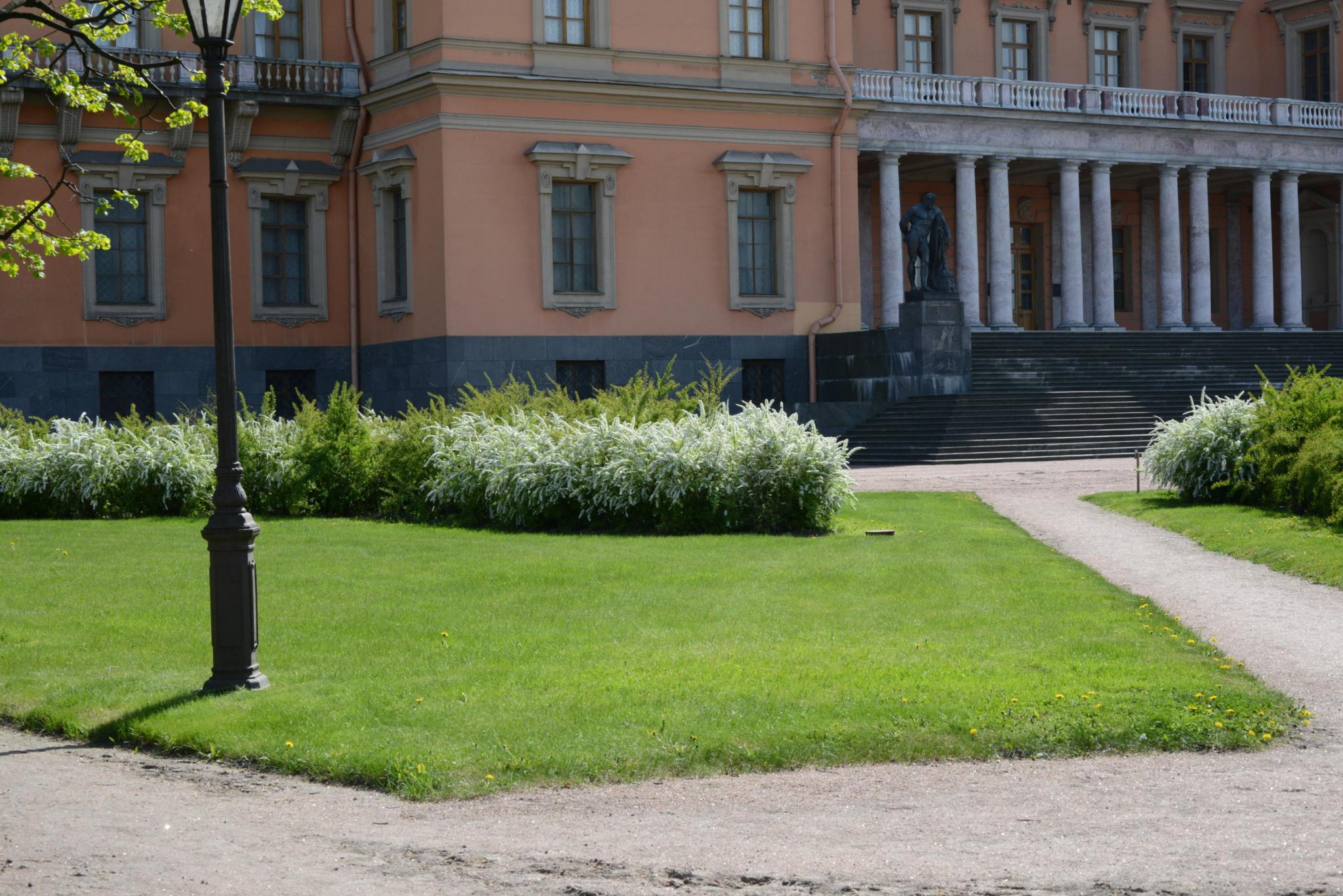Opening times
Garden around St Michael’s Castle is closed for visitors (except for events)
Engineering Square is constantly available
Address: Sadovaya str., 2, Zamkovaya str., Klenovaya str.
Getting here: Metro – Nevsky Prospekt, Gostiny Dvor

Saint Michael’s Castle
Saint Michael’s Castle and its pavilions occupy a part of the vast territory of the Third Summer Garden, established during the reign of Peter the Great.
From 1741 to 1745, the grand Summer Palace of Empress Elizabeth, designed by Francesco Bartolomeo Rastrelli, was built in the Third Summer Garden. It was one of the authentic masterpieces of Russian architecture of the mid-18th century.
In 1796, after Paul I ascended to the throne, the palace in the Third Summer Garden was dismantled, in its place a new palace/castle was built. The castle’s overall design and the first plans were drawn up by Paul himself.
The foundation stone was laid on 26 February 1797. Vasily Bazhenov’s plans, worked on from 1792-1794, were used as the basis for its construction.
Construction of the castle finished in autumn 1800.
Saint Michael’s Castle and the square with an equestrian statue of Peter the Great were separated from the surrounding areas by deep canals with drawbridges across them.
In the early 1820s, the building was transferred to the Main Engineering Institute. In February 1823, it received a new name — Engineers’ Castle.
The Garden Around Saint Michael’s Castle
The garden around Saint Michael’s Castle came to be in 1824-1825 as a result of the reconstruction of the territory from a design by architect Carlo Rossi. It consisted of perimeter paths along the façades and small flower beds in the corners. The canals surrounding the grand square and the Church Canal were filled in. Sadovaya Street was extended from Italyanskaya Street to the Field of Mars. At the same time, a path was formed by rows of linden trees along the banks of the Fontanka. Concurrently, the bridges on Sadovaya and Trekhluchevoi Bridge were covered, and in place of the filled-in Voskresensky Canal, and gardens were planted adjacent to the boulevards surrounding the castle.
In 1991, Saint Michael’s Castle became a part of the architectural complex of the State Russian Museum.
In 2003, the restoration of the garden around Saint Michael’s (Engineers’) Castle was completed. The following were recreated: a section of the historical Voskresensky Canal, Trekhluchevoi Bridge, the fence along the banks of the Fontanka, and the two rows of linden trees along the perimeter of the garden.
Engineers’ Square
Engineers’ Square was designed in 1829 in two parts by the architect Carlo Rossi after the canals around the ground were filled with soil and the sections of the Engineers’ Street were laid and Sadovaya Street was continued. The planting of the garden began after the construction of a wooden circus building. The garden was done in the landscape stile. In 1843 the square was redone due to the reconstruction of Manezhnaya Square. During its reconstruction Rossi closed the passage to the riding arena (the current Winter Stadium) and the palace stables. According to Rossi’s design the entrance the castle ground was from Engineers’ Street between two pavilions designed by Vasily Bazhenov that served as propylaea.
In 1877, he construction of the stone building of the Ciniselli Circus began on the Engineers’ square t. In 1871-1872 a mansion for the Minister of War was built in the part of the square belong to the Engineering Department. In 1879 the square was redesigned by the gardener Vladimir Wiese. The layout of the section of the square under the jurisdiction of the city department was significantly enlarged and consisted of three longitudinal landscape and four transverse paths.
By 1902 the square was surrounded on three sides by a cast-iron fence and a wooden fence on the fourth. A building for power station studies and one for reserve firefighters were built on the territory of the square. During the Soviet period a playground with a sandbox and an electric power transformer were built on the eastern side of the square.
During the post-war years the square was reconstructed by Evgeny Katonin, with the broadway between the stables and the riding arena. The layout of the square took on a regular character.
From 1946-1947 the area around Engineers’ palace was reconstructed by the architects Valerian Kirhoglani, Evgeny Katonin, and Nikolai Baranov.
The ensemble of Engineers’ Castle is organically connected with the Summer Garden and Field of Mars ensembles, Arts Square, and Mikhailovsky Garden.



